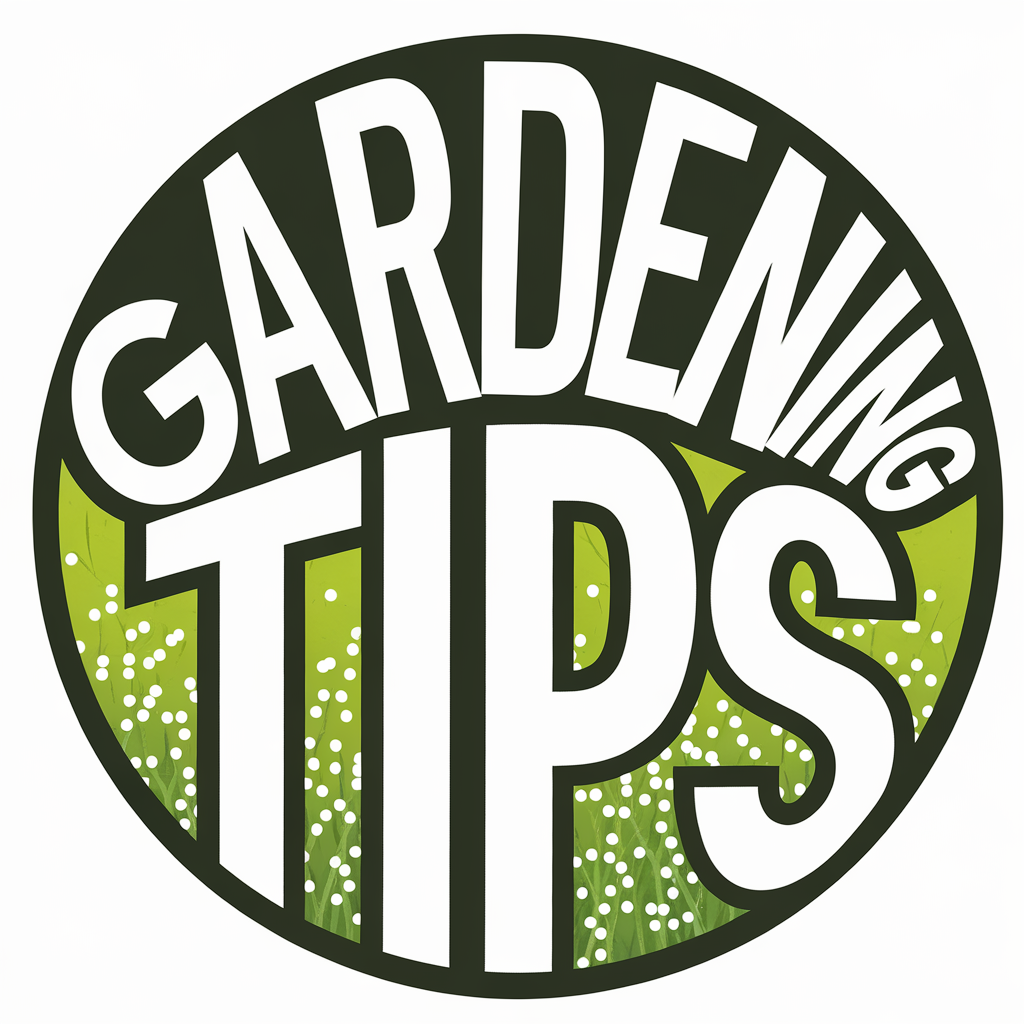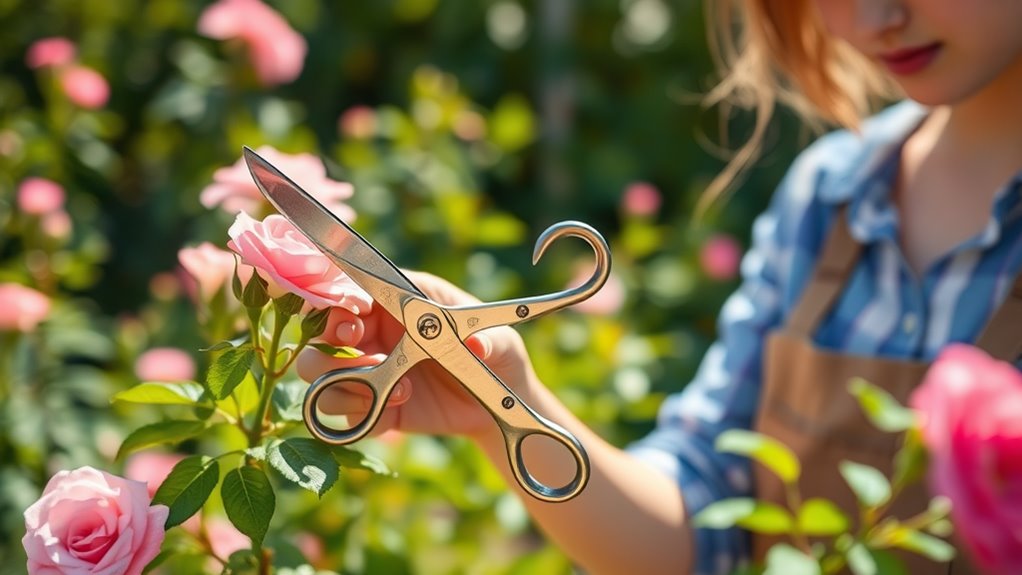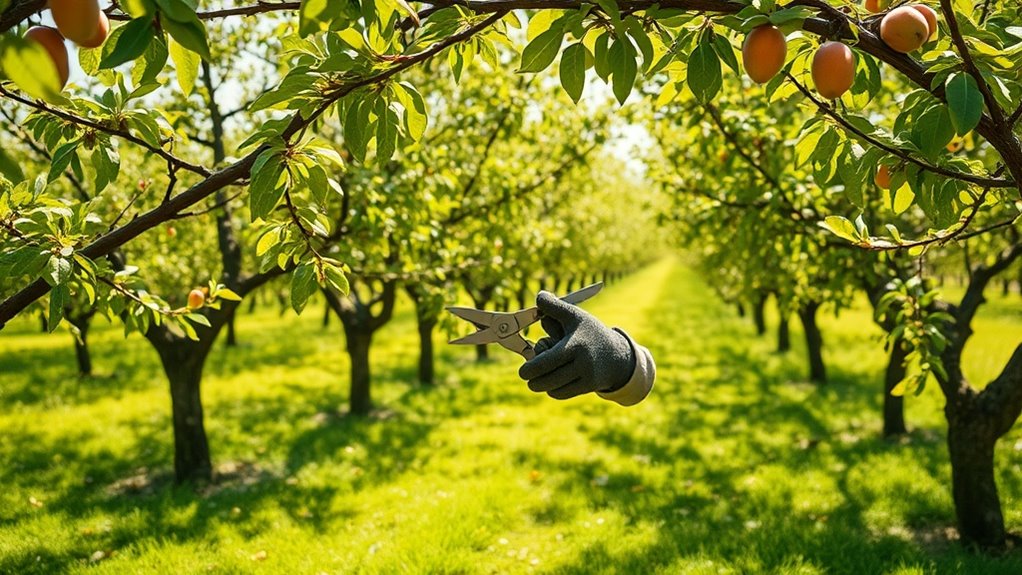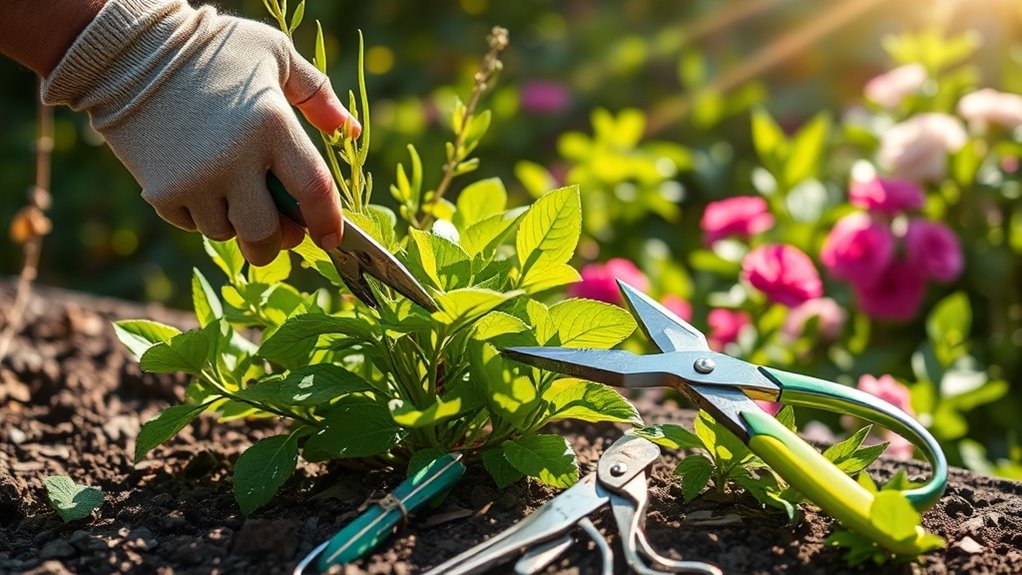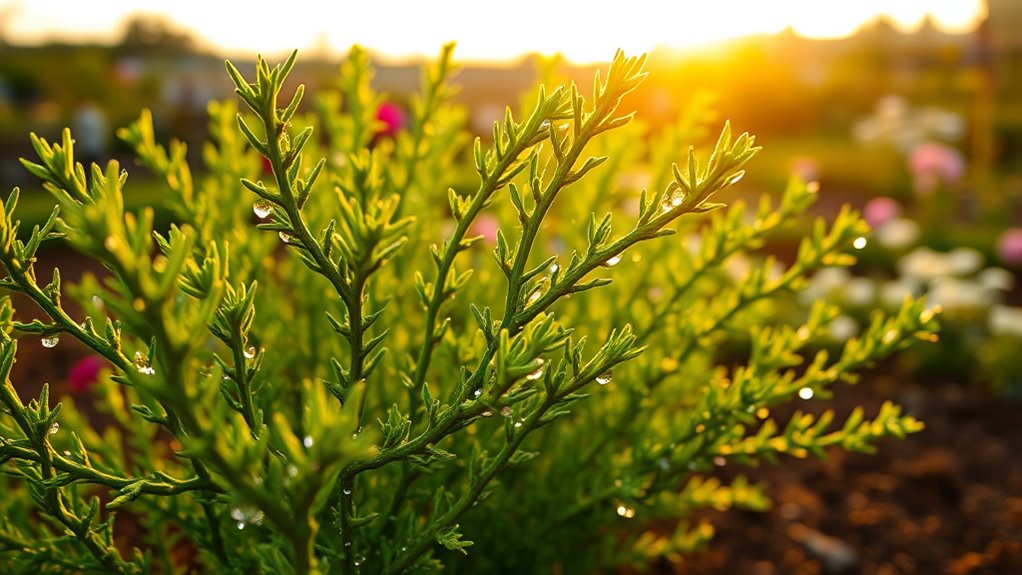How to Prune Like a Pro – Even If You’re Totally New
To prune like a pro, start by using sharp tools like bypass pruners and loppers for clean cuts. Always prune during the right season; late winter or early spring is best for most plants. Remove dead or diseased branches whenever necessary. Use techniques like thinning for air circulation and heading back for bushier growth. Always look for signs your plants need pruning, such as yellowing or wilting leaves. Discover more tips to refine your pruning skills.
Understanding the Basics of Pruning
Have you ever wondered why pruning is essential for your plants?
A solid pruning guide can help you understand its importance.
Pruning encourages healthy growth by removing dead or diseased branches, allowing better air circulation and light penetration. It also shapes plants for aesthetic appeal, promoting a more robust structure. Timing matters; pruning during the right season guarantees ideal recovery and growth. Additionally, you can prevent overcrowding, which can lead to pests and diseases. Furthermore, mastering the art of pruning can significantly enhance your gardening outcomes.
Essential Tools for Pruning
Choosing the right tools for pruning is essential for achieving ideal results in your garden.
You’ll need sharp bypass pruners for clean cuts on live branches, and loppers for thicker limbs.
A pruning saw is essential for larger branches, while hedge shears are perfect for shaping shrubs.
Don’t forget gloves to protect your hands and safety goggles to shield your eyes from debris.
A sturdy ladder can help you reach higher areas.
Keeping your tools clean and well-maintained will enhance their effectiveness and longevity.
Invest in quality tools, and you’ll find pruning becomes a more efficient and enjoyable task. Additionally, sharp tools can significantly improve the quality of your cuts and reduce the stress on your plants.
Knowing When to Prune
When’s the best time to prune your plants?
Timing is essential for effective pruning.
Generally, late winter or early spring is ideal for most deciduous trees and shrubs, as they’re still dormant.
This minimizes stress and encourages healthy growth.
For flowering plants, prune immediately after blooming to avoid cutting off next year’s buds.
If you’re dealing with dead or diseased wood, remove it anytime to prevent the spread of issues.
Always consider your specific plant species, as some may have unique needs.
Keeping track of seasonal changes helps you know when to act for ideal plant health. Additionally, understanding pruning timing myths can help you make informed decisions for your garden.
Different Pruning Techniques
Understanding different pruning techniques is essential for maintaining the health and aesthetics of your plants.
You’ll often use three main methods: thinning, heading back, and rejuvenation.
Thinning removes entire branches to improve air circulation and light penetration, which promotes growth.
Heading back involves cutting back stems to encourage bushier growth and better shape.
Rejuvenation is a more drastic approach, where you cut back older plants to ground level, stimulating new growth.
Each technique serves specific purposes, so choose wisely based on your plant’s needs. Additionally, implementing effective pruning techniques can lead to a substantial 50% increase in yield, further enhancing your gardening success.
Mastering these methods will enhance your gardening skills and guarantee vibrant, thriving plants.
Pruning Various Types of Plants
When pruning flowering plants, you’ll want to focus on removing spent blooms and shaping the plant for better air circulation. For fruit trees, timing is vital; pruning during the dormant season encourages healthy growth and abundant fruit production. Understanding the specific needs of each type of plant will guarantee effective pruning and ideal health. Additionally, adopting the right pruning technique can significantly enhance the vitality of your garden.
Pruning Flowering Plants
Pruning flowering plants is essential for promoting healthy growth and enhancing blooms. To achieve the best results, you need to understand when and how to prune different types of flowering plants. Here’s a quick reference table to guide you:
| Plant Type | Best Time to Prune | Pruning Method |
|---|---|---|
| Roses | Late winter | Cut back to 1/3 height |
| Hydrangeas | Early spring | Trim dead stems |
| Perennials | Fall or spring | Deadhead and divide |
Use clean, sharp tools for precise cuts, and always prune above a bud to encourage new growth. Happy pruning!
Pruning Fruit Trees
Maintaining a healthy fruit tree requires skillful pruning to enhance fruit production and overall tree vigor.
To effectively prune, focus on these key techniques:
- Remove dead or diseased branches to prevent infection.
- Thin out crowded branches for better air circulation and sunlight penetration.
- Cut back excessively long limbs to encourage balanced growth.
- Shape the tree to maintain a desired height and form.
Common Mistakes to Avoid
Have you ever wondered what common mistakes can sabotage your pruning efforts?
One major pitfall is cutting too much at once; this can shock your plants and hinder their growth.
Another mistake is neglecting to clean your tools, which can spread disease.
Always avoid pruning during extreme weather conditions, as it can stress the plants.
Additionally, don’t ignore the specific needs of each species; improper timing can lead to poor results.
Finally, failing to step back and assess your work can lead to uneven cuts.
To promote healthier growth, consider implementing essential pruning techniques that cater to the unique needs of your plants.
Tips for Maintaining Your Tools
To achieve the best results in your pruning efforts, keeping your tools in top condition is essential. Regular maintenance not only prolongs their lifespan but also enhances performance. Follow these tips:
- Clean After Use: Wipe blades with a damp cloth to remove sap and dirt.
- Sharpen Blades: Use a sharpening stone or file to keep blades sharp for clean cuts.
- Oil Moving Parts: Apply lightweight oil to hinges and pivots to prevent rust and guarantee smooth operation.
- Store Properly: Hang tools in a dry place, avoiding moisture to prevent corrosion. Additionally, essential maintenance involves checking for any signs of wear and addressing them promptly to avoid more significant issues later on.
Signs Your Plants Need Pruning
When you notice overgrown branches and leaves, your plants may need pruning.
Additionally, dead or dying foliage can indicate that it’s time to trim back.
Poor air circulation around your plants can also signal that pruning is necessary to promote healthy growth.
Overgrown Branches and Leaves
Overgrown branches and leaves can signal that your plants are in desperate need of attention.
Ignoring these signs can lead to reduced growth and health issues.
Here’s what to look for:
- Dense foliage: If branches overlap greatly, light can’t reach the inner leaves.
- Leggy growth: Long, spindly branches indicate your plant is stretching for light.
- Poor air circulation: Overcrowded leaves trap moisture, fostering disease.
- Unbalanced shape: An uneven canopy can weaken the plant’s structure.
Dead or Dying Foliage
Identifying dead or dying foliage is essential for maintaining the health of your plants. Regularly inspect leaves and stems for signs of distress. Here are key indicators to watch for:
| Sign | Description | Action Required |
|---|---|---|
| Browning Leaves | Edges or tips turn brown | Prune affected areas |
| Wilting | Leaves appear limp and droopy | Assess water needs |
| Yellowing | Leaves lose green color | Remove unhealthy leaves |
| Dropping Leaves | Sudden leaf drop | Check for pests |
| Stunted Growth | Lack of new growth | Prune to encourage vigor |
Act promptly to guarantee your plants thrive!
Poor Air Circulation
Poor air circulation around your plants can lead to a range of problems, including increased susceptibility to pests and diseases.
To recognize when your plants need pruning due to poor airflow, look for these signs:
- Leaves appear yellow or wilted.
- Foliage is dense and tangled.
- Mold or mildew develops on leaves or soil.
- Stunted growth despite adequate light and water.
